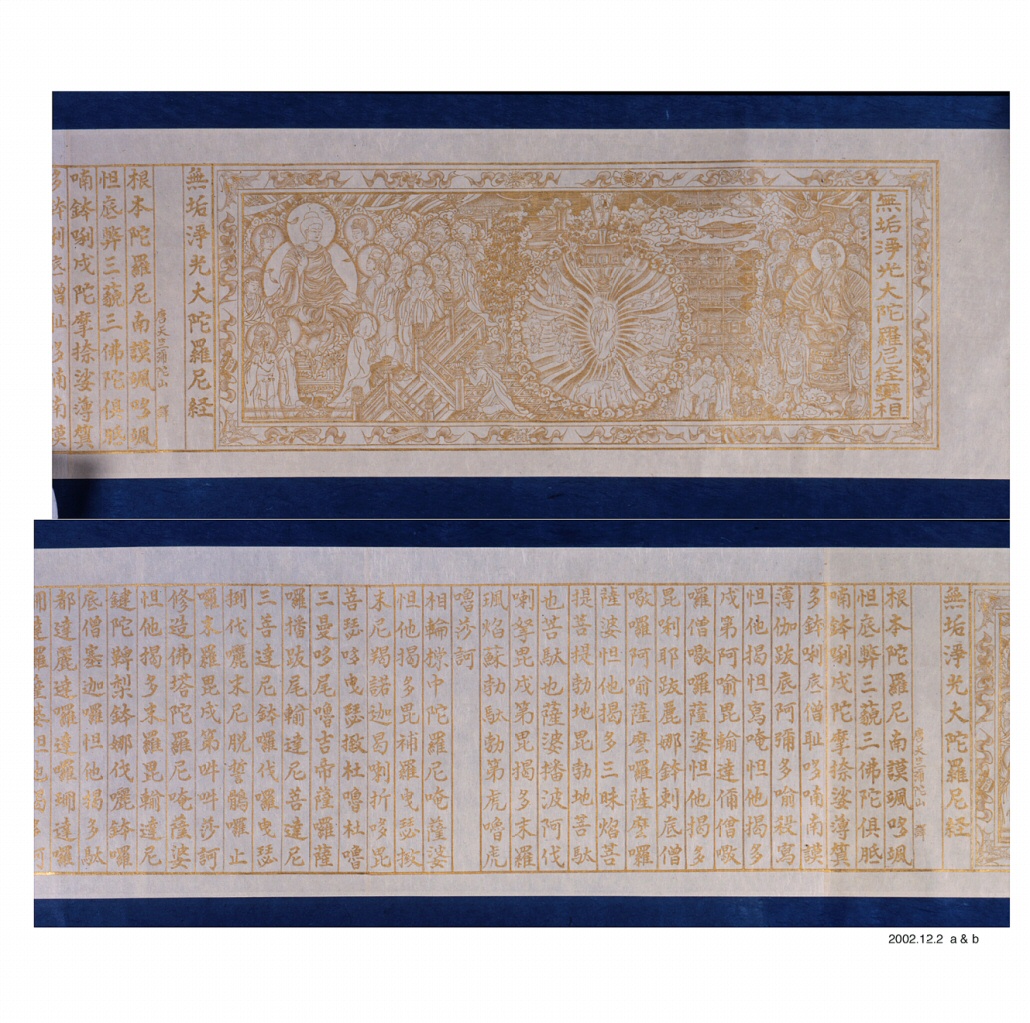Activity
Buddhist Manuscripts (Sutras) of the Goryeo Dynasty (918-1392)

Illustrations of Buddhist texts and ritual formulas
The religious fervor and opulence of the Goryeo dynasty (918-1392) of Korea can be seen in the intricately hand-copied sutras (the teachings of the Buddha) that date to this period. Korean monk-scribes were commissioned by royals, aristocrats, and individual high-ranking monks to write the sacred words of the Buddha by applying pigments of ground gold and silver to deep indigo–dyed mulberry paper. They began by pictorially narrating the sermons of the Buddha with key episodes within the sutra chapter on the frontispiece (first four sutra panels). The rest of the sutra comprised flowing calligraphy translating the Buddha’s teachings.
Monk-scribes, and in later times professional calligraphers, working in a royal scriptorium followed strict rules when writing a sutra, which is composed of set elements within a structured format. One format in which a sutra may be copied is the accordion booklet, a long rectangular book with one long sheet of paper folded back and forth inside like an accordion. Traditionally, the interior paper is made of several sheets pasted together. The front and back of the booklet are often decorated with mythical flowers called bosanghwa. In the center of the booklet cover is a vertical rectangle known as a cartouche, within which the title is written.
A sutra is read from right to left, beginning with the frontispiece. At the upper-right-hand corner of the frontispiece is the sutra title. Sutras of the early 1300s often have the figure of the Buddha accompanied by his attendants painted in the right half of the frontispiece. Key events within the sutra are shown on the left half. The entire space is filled with decorative lines, spirals, dots, other abstract geometric designs, and Buddhist motifs. A border outlining the frontispiece is made up of the thunderbolt (vajra), symbolizing wisdom, and the wheel of the Doctrine (chakra), symbolizing Buddhist teachings, in repeating patterns.
Written from right to left, the pages that follow the frontispiece contain the sutra text, those commissioned by royalty having fourteen characters per line. At the end of the sutra is a dedicatory inscription. It is in this section that the date, the donor’s name, the name of individual for whom the sutra is dedicated, a prayer, and the name of the monk-scribe is written.
Although a form of movable metal type was invented in Korea in the twelfth century to allow for the mass production of Buddhist texts, laboriously hand-copied illuminated sutras continued to be commissioned. This is because the act of writing Buddhist scriptures was considered the deepest expression of Buddhist worship, bringing religious merit to the monk-scribe, the patron, and the family members and/or deceased relatives to whom the writing was dedicated.






